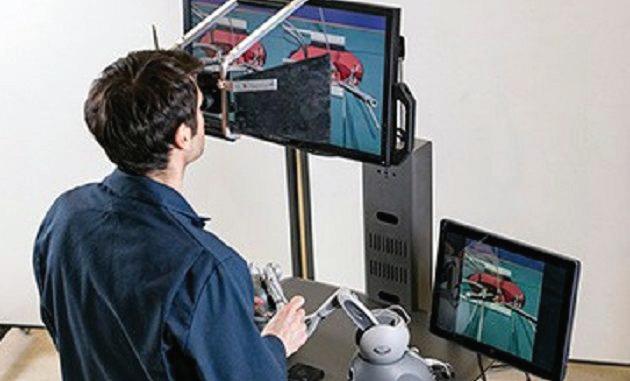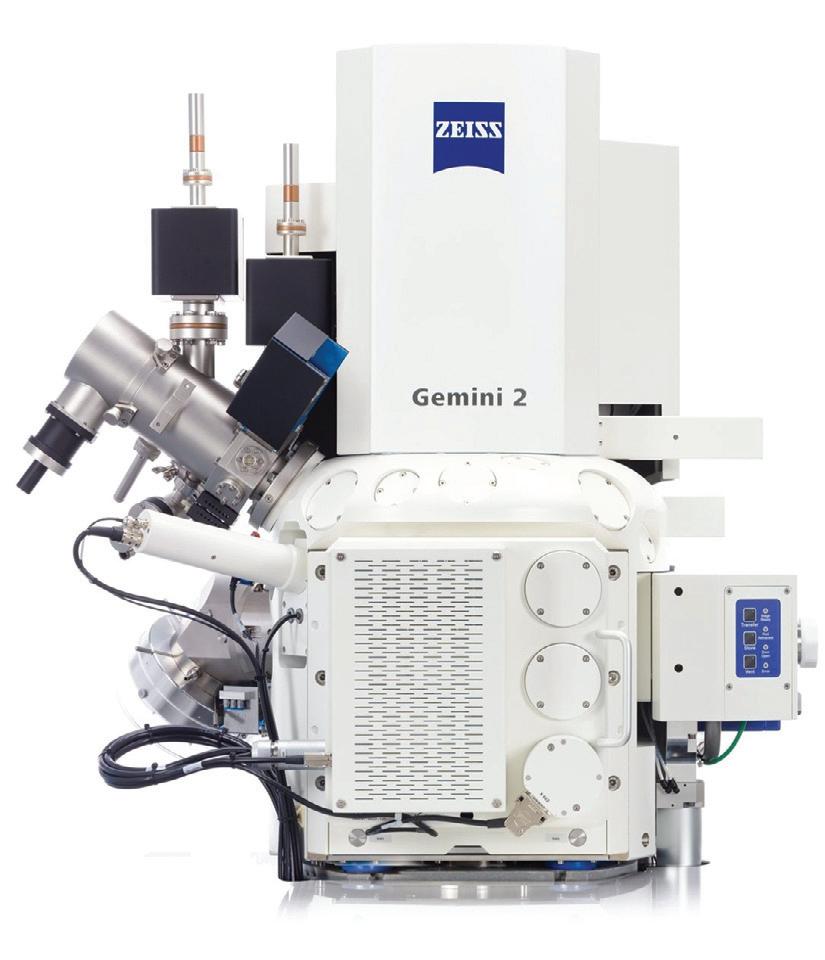
9 minute read
New Products
Spectrometric kits
Thermo Scientific says its recently-launched ready-to-use InsuQuant Mass Spectrometric Immunoassay Kit will streamline insulin bioanalysis procedures for biopharmaceutical researchers, as well as for workers in the sports anti-doping industry. The kit incorporates all necessary reagents and consumables needed in the pre-analytical stage of the LC-MS workflow in a convenient, easyto-use platform. With the new product, researchers no longer need to make buffers and match reagents, thus saving resources and reducing the risk of human errors in complex protocols. “Current protein purification methodologies require researchers to source their own reagents and buffers, which can result in complex, lengthy procedures that leave more room for error and inconsistencies during downstream analysis,” said Sam Bonfig, product manager for affinity consumables products, Thermo Fisher Scientific. “Our goal is to simplify our customers’ workflows, and our new kit does just that by providing an out-of-the-box solution containing insulin standards, elution solvents, an LC column, and all other components needed to run the pre-analytical affinity capture of insulin.” A proprietary microcolumn technology enables the InsuQuant Mass Spectrometric Kit to make advanced detection of endogenous insulin and its exogenous analogues in the tip of a pipette, while also reducing background and improving reproducibility. The kit is fully compatible with both the Thermo Scientific Versette automated liquid handler and the Finnpipette Novus i multichannel electronic pipette. Following sample preparation with the InsuQuant Mass Spectrometric Kit, users can achieve accurate, precise and sensitive separation on the Thermo Scientific Vanquish Flex Quaternary UHPLC system, and perform quantification of complex insulin analogues using the Thermo Scientific Q Exactive Hybrid Quadrupole-Orbitrap mass spectrometer. The mass spectrometric immunoassay (MSIA) methodology has demonstrated pg/mL levels of detection while yielding simultaneous qualitative and quantitative data from complex biological matrices, making it well suited for use with plasma. The kit will be on display at the annual American Society of Mass Spectrometry (ASMS) Conference from June 4-8 in the Thermo Fisher Hospitality Suite, White River Ballroom F, at the JW Marriott in Indianapolis, Indiana. Web: www.thermofisher.com/order/catalog/product/991insk96
Advertisement
3D surgery simulator
The efforts to get more physicians trained to perform a pulmonary endarterectomy got a boost through the work of National Research Council of Canada (NRC) researchers that developed a “first-of-itskind” pulmonary endarterectomy (PEA) surgery simulator. The first simulator is now in operation at the Toronto Western Hospital. “The National Research Council developed one more tool to help Canadian doctors better serve their patients,” said Roman Szumski, vice president, life sciences, NRCC. “Our expertise makes us a unique collaborator for companies developing simulators for doctors and healthcare practitioners to perform complex and challenging medical techniques.” The simulator was built with the help of an innovation fund from Bayer Inc. The simulator may reduce the training time for residents by up to six months. Web: http://www.nrc-cnrc.gc.ca/index.html

Cell washers
A new automated, high-performance cell washer is capable of reproducible and rapid blood cell washing of up to 24 tubes in a three-minute run. The Thermo Scientific CW3 Cell Washer was engineered to combine the benefits of efficient performance with user-friendly design and safe operation. Users can select one of the pre-set programs that have been designed to run in automatic mode, accelerate blood cell washing cycles and achieve significant time savings, according to laboratory equipment maker Thermo Fisher Scientific. “Effective blood cell washing is extremely important in the removal of plasma and unwanted antibodies to ensure that patients will not be affected by adverse health effects and that blood-transfused products will retain all of their beneficial attributes,” said Hugh Tansey, global product director, centrifugation, Thermo Fisher Scientific. “To address this issue, we’ve developed a novel cell washer to help clinical, hospital and serological laboratories, as well as the blood bank and transfusion centers, fulfill their fundamental mission to promote the well-being of patients.” The washer has been designed to achieve optimal corpuscle dryness by allowing users to pre-set the desired decanting speed. At the same time, corpuscle washing is improved via the optional overflow method. The tubes swing at a fixed positive angle to sediment cells rapidly at the bottom of the tube, whereas when decanting, the rotor holds tubes at a slightly negative angle and the saline is decanted centrifugally. Technicians also have a choice of using 12 or 24-place rotors. The CW3 Cell Washer features an automatic alert mechanism that informs users about low or disrupted saline levels and when a run is complete. A viewport on top of the unit facilitates quick calibration, while the saline distributor is mounted directly on top of the rotor to reduce the risk of cross-contamination. The new washer is also equipped with tube racks bearing red and blue number labeling for easy sample balancing. When closed-monitoring of the washing process is required, the system can be operated manually to allow for cells that need to be washed step-by-step. As a low maintenance instrument, the CW3 Cell Washer includes easy-to-change pump tubing and an easy-to-remove catch basin, rotor and rotating bowl. Web: /www.thermofisher.com/ca/en/home.html

Ventilation control
Air quality solutions company Aircuity has released a new tool designed to help laboratory operators better control their ventilation systems and significantly reduce their energy bills. The company’s Aircuity 2.0 system includes Aircuity’s new MyAircuity web and desktop application. The software provides building owners and facility managers relevant information and visibility into their facilities’ ventilation system. It delivers data and insights that can help them make smarter decisions regarding the management of ventilation systems. The MyAircuity app goes beyond providing simple data trends. It delivers “deeper analytics” of cost and energy savings, indoor environmental quality responses, and even occupant behavours, the company said. Aircuity 2.0 also includes physical system upgrades. Aircuity made a significant investment to enhance the intelligence of its devices so the system can better “watch itself” and has migrated its data centre to Microsoft Azure. Web: http://www.aircuity.com/

new Products
Cytometry systems
Cytek Biosciences Inc., launched its new Aurora advanced flow cytometry system. The company said its latest product offers improved capabilities beyond those found in some higher-priced systems. “Cytek has evolved to address an unmet need,” noted Dr. Wenbin Jiang, CEO of Cytek Biosciences. “With Aurora, more labs will have the ability to obtain deeper biological insights from a single sample. This will have a significant impact on research and clinical application fields such as immunology, oncology and systems biology.” Aurora enables a 20+ colour capability, using three excitation lasers and 50 channels. Innovative enhancements include excitation optics and compact semiconductor detector modules with high quantum efficiency. These allow for the implementation of more detection channels per laser than conventional flow cytometry systems. Depending on the laser excitation wavelength, this permits detection of any fluorescence emission in the 400-900nm range without having to change optical filters. Aurora’s optical design and unmixing algorithm enable the use of a wide array of dyes, including those with highly overlapping spectra. This is not possible using conventional cytometry, according to the company. Aurora will be demonstrated at the industry’s premier flow cytometry conference, CYTO 2017, in Boston from June 10-14 at booth #86. Aurora joins Cytek’s existing lineup of flow cytometry solutions, all of which are backed by Cytek’s comprehensive service plan offerings. Web: www.cytekbio.com

Autoclaves
Priorclave Ltd., a London-based manufacturing company with operations in Canada and the United States, offers autoclave units ideal for small laboratories. With autoclave cabinets ranging from 40-60L models to 230-700L models, the company has got most benchtop to compact floor-model autoclave needs covered. The company’s products are ideal for pharmaceutical, healthcare, agricultural and other research applications. The products’ compact and flexible design make them suitable for sterilization applications, media preparation, liquids, waste, and glass instruments. Bench-mounting Priorclave autoclaves are available in large 40L or 60L capacities using the minimum of bench space. They come with two stainless steel shelves and optional mounting stands, stainless baskets, and stainless waste containers are available. Both capacities are available as vacuum models. Priorclave double-ended autoclaves are available in capacities from 150 to 700L and above with other sizes available on request. They are available either electrically or direct steam heated and can be fitted with steam/water jackets if required. Priorclave front-loading autoclaves are available in 100, 150 and 200 and 320L capacities heated either electrically or by direct steam. All models are castor mounted for ease of positioning and are fitted with two non-tipping shelves. A range of stainless steel baskets, waste containers, and loading trolleys are available to suit these autoclaves. Priorclave rectangular section autoclaves combine a huge internal capacity with a small floor area. They are available in capacities from 230L to 700L and above. Castor mounted for ease of positioning, they are available either electrically or direct steam heated and feature a simple, two hand wheel hinged door closure. All models are fitted with two non-tipping shelves and a range of stainless steel baskets, waste containers, and loading trolleys are available to suit these autoclaves. These models are optionally available with steam/water jackets if required. Web: www.priorclave.co.uk/

Microscopes
Zeiss released a new line of focused ion beam scanning electron microscopes (FIB-SEMs) that significantly increases image resolution and material characterization enabling researchers to ramp up their sample preparations. The new Zeiss Crossbeam 550 allows simultaneous modification and monitoring of samples, resulting in fast sample preparation and high throughput for applications such as: cross-sectioning, TEM lamella preparation or nanopatterning. Nanostructures such as composites, metals, biomaterials or semiconductors can be investigated with analytical and imaging methods in parallel. The equipment provides quality 2D and 3D imaging. In the life sciences, Zeiss Crossbeam 550 delivers enhanced resolution at low voltages and an outstanding stability for long-term 3D tomography. It is possible to integrate the new workstation into correlative workflows and to combine it with light, X-ray or ion beam microscopy. Zeiss Crossbeam 550 replaces its predecessor the Crossbeam 540 and is available in a variation with a large chamber for the first time. The Crossbeam 550’s new Tandem decel mode enables enhanced resolution together with a maximization of image contrast at low landing energies. The Crossbeam 550 uses Zeiss’s Gemini II electron optics which delivers optimum resolution at low voltage and high probe current simultaneously, the company said. The FIB column combines the highest available FIB current of 100 nA with the new FastMill mode, allowing for precise and efficient material processing and imaging in parallel. The new process for automated emission recovery increases the user-friendliness and optimizes the FIB column for reproducible results during long-term experiments. Web: www.zeiss.com/microscopy/int/products/fib-sem-instruments/ crossbeam.html

Imaging equipment
According to Logos Biosystems, its latest Celena S Digital Imaging System will enable even non-technical personnel to capture high-quality digital images suitable for a variety of life sciences use. The multi-purpose Celena S Digital Imaging System incorporates an onstage incubator and is designed to simplify high-resolution fluorescence, brightfield, and phase contrast imaging, according to the South Korean maker of laboratory automation and imaging products. The Celena S is a fully integrated digital imaging system that incorporates an inverted microscope, a high sensitivity CMOS camera, LED light sources, fluorescence filters, a computer, and image capture and analysis software into one device. The system comes with interchangeable objectives and LED filter cubes. The Celena S can accommodate a wide range of fluorescence and brightfield applications. The intuitive software makes sophisticated imaging simple, such as time-lapse imaging, Z-stack imaging, and image-based automated cell counting. An onstage incubation system provides the option to precisely control the environmental temperature, humidity, and gas content to cells for sensitive live cell imaging. Web: http://logosbio.com/digital_microscope/ceLena _ s/features.php





